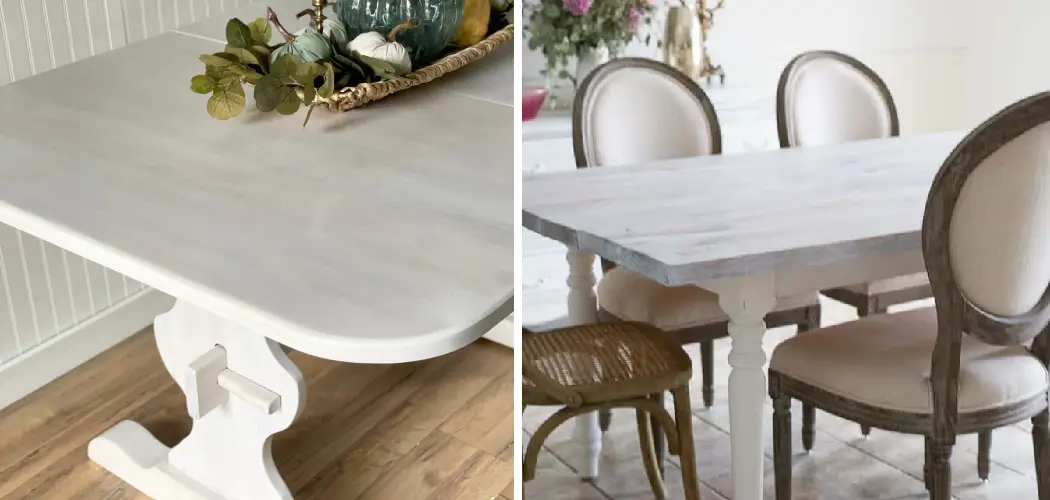Whitewashing is a popular technique that involves applying a white stain or paint to wood, giving it a rustic, vintage look. While it may seem intimidating at first, whitewashing is actually a relatively simple process that anyone can master with the right tools and techniques.
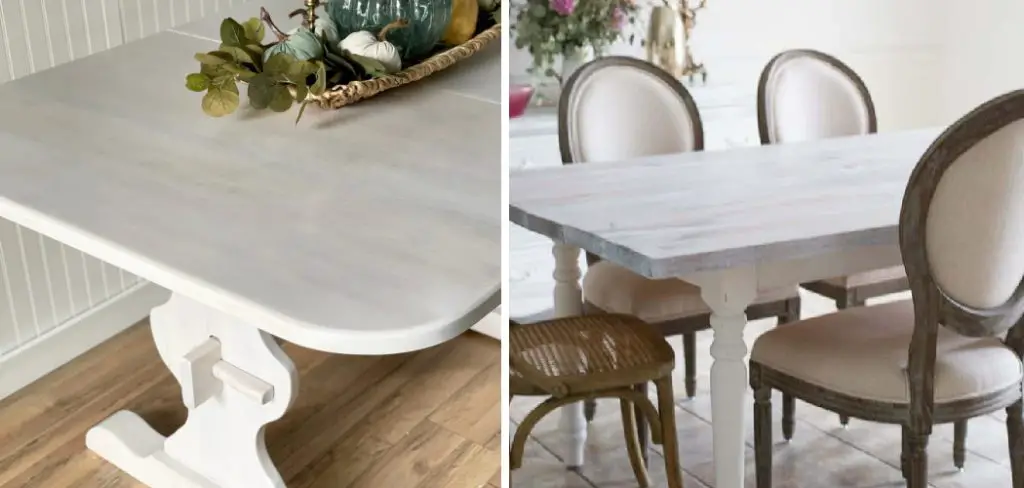
In this blog post, we will guide you through the process of how to whitewash a table, from preparing the surface to applying the whitewash and sealing it for long-lasting protection. Whether you’re a DIY enthusiast or simply looking to refresh an old piece of furniture, this guide is the perfect place to start.
Can You Whitewash a Table?
If you’re looking to give your table a fresh, new look, whitewashing might be just the technique you need. Whitewashing involves diluting paint with water to create a semi-transparent coating that still allows the natural grain of the wood to show through. It’s a great way to achieve a rustic, coastal look that can brighten up any space.
Whitewashing works best on raw, unfinished wood, so if your table has been previously sealed or finished, you’ll need to sand it down first. With a little bit of patience and some know-how, you can transform your table into a beautiful, one-of-a-kind piece that will be the envy of all your guests.
Why Should You Whitewash a Table?
When it comes to decorating your home, every detail matters. That’s why whitewashing a wooden table can make such a dramatic difference. Not only does it give the table a beautiful, rustic look, but it can also brighten up your space and make it feel more open and airy.
Plus, whitewashing is a relatively easy and inexpensive DIY project that can be done in just a few hours. So if you’re looking for a simple way to breathe some new life into an old piece of furniture, consider whitewashing your table. You might be surprised by just how much of a difference it can make!
How to Whitewash a Table: A Step-by-Step Guide
Step 1: Preparing the Surface
Before you begin whitewashing your table, you must prepare the surface to ensure that the whitewash adheres properly and creates a consistent finish. Start by cleaning the table’s surface with a damp cloth to remove any dirt or debris. If the table has an existing finish, sand it lightly with fine-grit sandpaper until the surface is smooth and free of imperfections. Once the surface is clean and dry, you can move on to the next step.
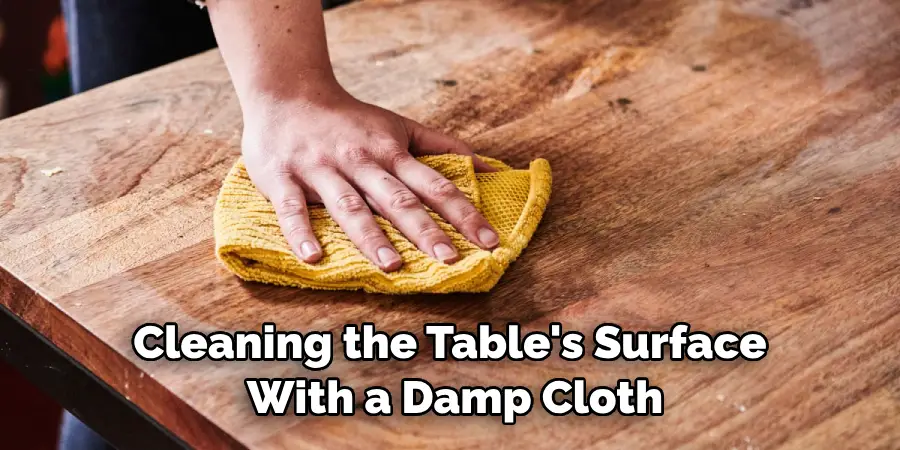
Step 2: Applying the Whitewash
To create the whitewash, mix water and white latex paint in a container. Stir the mixture well until it’s fully blended and has a smooth, even consistency. Use a paintbrush or a rag to apply the whitewash to the table’s surface, working in small sections to ensure that the whitewash is applied evenly.
As you work, use a dry cloth to wipe away any excess whitewash, leaving behind a thin, translucent layer of white stain. Continue until the entire surface of the table is covered in a thin, even layer of whitewash.
Step 3: Creating a Distressed Look
To create a more distressed, vintage look, you can use sandpaper to gently remove some of the whitewash in certain areas. Focus on the edges and corners of the table, as these areas would naturally experience wear and tear over time.
Use fine-grit sandpaper to gently sand away the whitewash, revealing the natural wood underneath. Be careful not to remove too much of the whitewash, which can make the table look too rough or uneven.
Step 4: Sealing the Whitewash
To protect the whitewash and ensure that it lasts for years to come, you’ll need to seal the surface of the table with a clear, protective finish. Choose a clear coat that’s compatible with the type of paint you used for the whitewash (water-based or oil-based) and apply it to the table’s surface with a clean, dry brush.
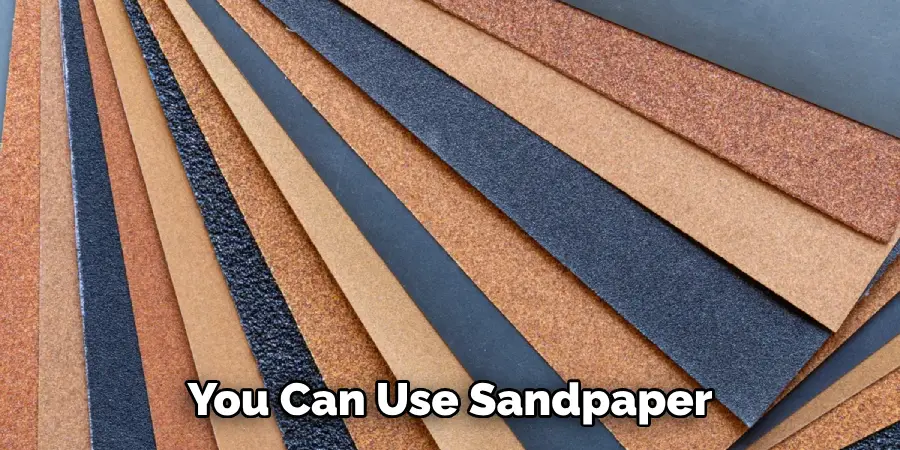
Follow the manufacturer’s instructions for drying and reapplication, as well as for cleaning the brush and any other tools you used during the process.
Step 5: Letting the Table Cure
Once you’ve applied the sealer, let the table cure for at least 24 hours before using or touching it. This will give the sealer and whitewash time to fully harden and set so that it won’t be damaged when exposed to everyday wear and tear. During this curing period, keep your table away from direct sunlight and moisture to ensure that it doesn’t warp or fade.
Step 6: Finishing Touches
Once the whitewash has fully cured, you can add a few finishing touches to really make your table stand out. Consider adding a light wax finish for extra protection and shine, or use steel wool to buff and smooth the surface of the table. You can also add decorative accents such as stencils or wood stains to create a truly unique look.
Step 7: Enjoy Your New Table!
Now that your whitewashed table is complete, it’s time to enjoy the fruits of your labor! Place your newly renovated piece in an area where it will be admired and enjoyed – whether that’s in your living room, dining room, or even your patio. No matter where you put it, you can be sure that your whitewashed table will be an eye-catching focal point for years to come!
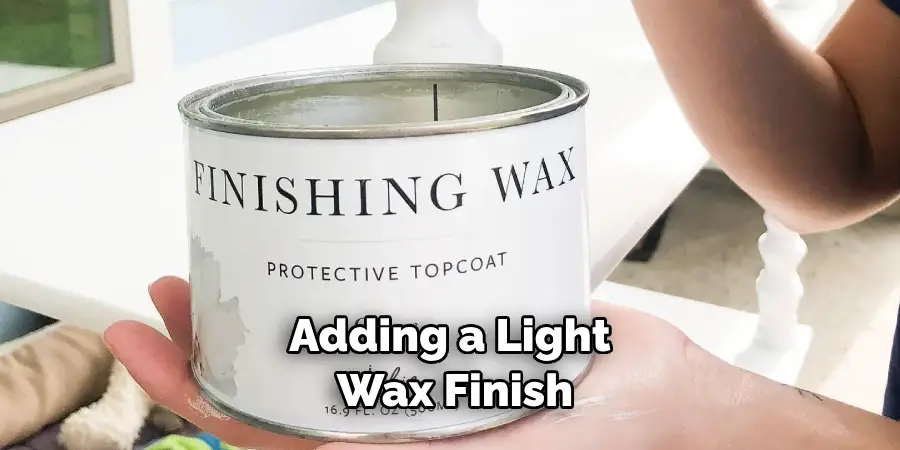
And if you ever want to give the table a new look, simply sand away the whitewash and start over again. There are endless possibilities when it comes to whitewashing furniture, so why not start experimenting and make your table a one-of-a-kind masterpiece? You’ll love how easy it is to transform the look of your living space with just a few simple steps.
Some Considerations Things When You Need to Whitewash a Table
Whitewashing a table can completely transform the look of your furniture, but it’s important to keep a few things in mind before beginning the process. Firstly, be sure to clean the table thoroughly to remove any dirt or grime that may interfere with the finish.
Sanding the table is also important to ensure the whitewash can fully adhere to the surface. When selecting your whitewash product, consider opting for a water-based formula as it will be safer to use indoors.
Additionally, experimenting with different techniques such as applying multiple coats or distressing the finish can add unique character to your table. With these considerations in mind, you’ll be well on your way to creating a beautiful whitewashed piece that stands out in any room.
5 Benefits of Whitewash a Table
1. Easy to Apply
Whitewashing a table is an easy and straightforward process that requires minimal effort and time. All you need to do is mix together some paint or whitewash with water, apply it to the surface of the table, and then let it dry. The result is a beautiful, natural-looking finish that can easily be customized with different colors or finishes.
2. Cost Effective
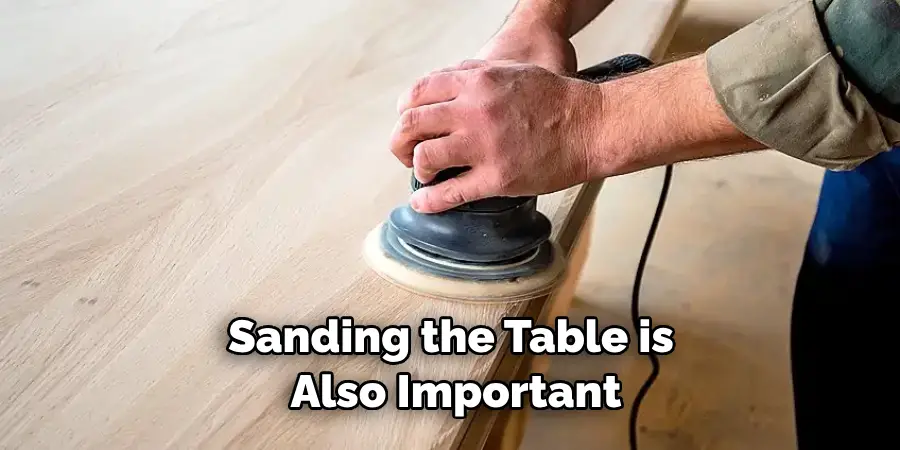
Whitewashing a table is also an economical way to update the look of your furniture without breaking the bank. All you need are a few simple supplies such as paint or whitewash, water, and a brush or roller, which are all relatively inexpensive items. Additionally, since the process is so simple and straightforward, there’s no need to hire a professional for the job.
3. Durable Finish
The finish created by whitewashing a table is surprisingly durable and resistant to wear and tear over time. This makes it ideal for tables that will be used frequently in high-traffic areas such as dining rooms or living rooms. Additionally, the finish can easily be refreshed whenever necessary by simply applying another coat of whitewash or paint if needed.
4. Adds Character
One of the best things about whitewashing a table is that it adds character to any piece of furniture instantly. The unique look created by this technique creates an interesting contrast between light and dark tones that can add visual interest to any space. Additionally, this technique also allows you to bring out certain features on your table such as its grain pattern or texture more prominently than before.
5. Versatile Look
Finally, whitewashing a table creates a versatile look that can fit into almost any style of home decor from modern to traditional and everything in between. You can customize the look further by playing around with different colors and finishes until you find one that fits your style perfectly!
Conclusion
Whitewashing a table is a fun and rewarding project that can transform an old piece of furniture into a beautiful, on-trend accent for your home. Following the simple steps outlined in this guide, you can achieve a gorgeous whitewashed look that you’ll be proud to show off to your friends and family.
Whether you’re a seasoned DIY pro or a newcomer to the craft, you’ll find that whitewashing is a relatively easy and enjoyable process that can yield impressive results. So go ahead and try it – we’re confident you’ll love the outcome! Thanks for reading our post about how to whitewash a table.

